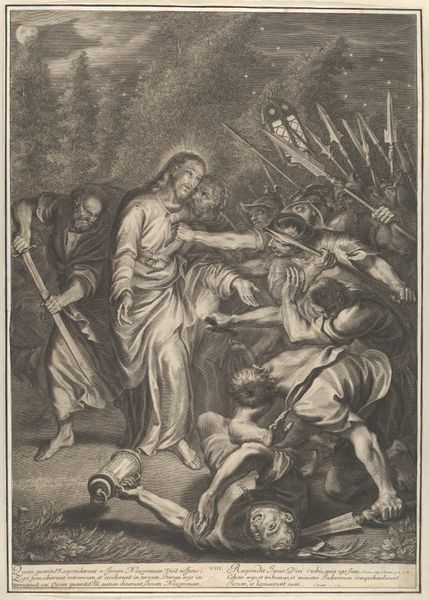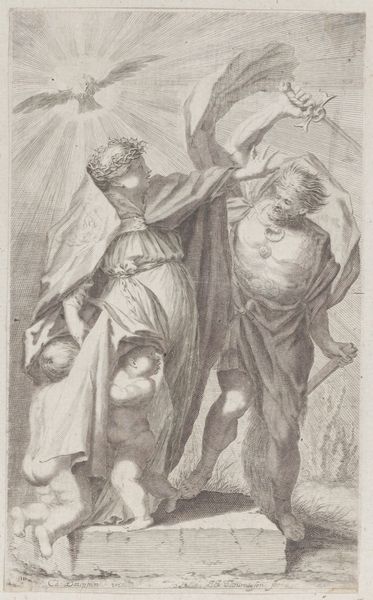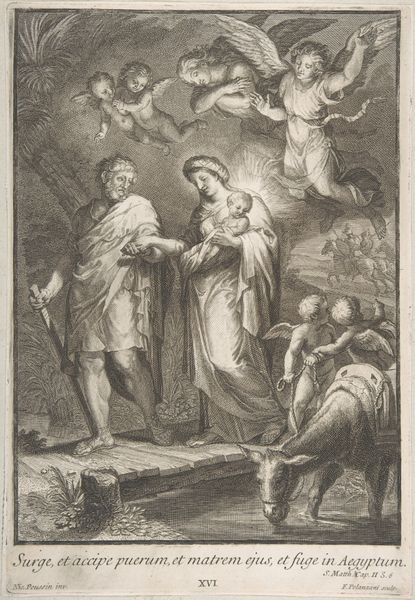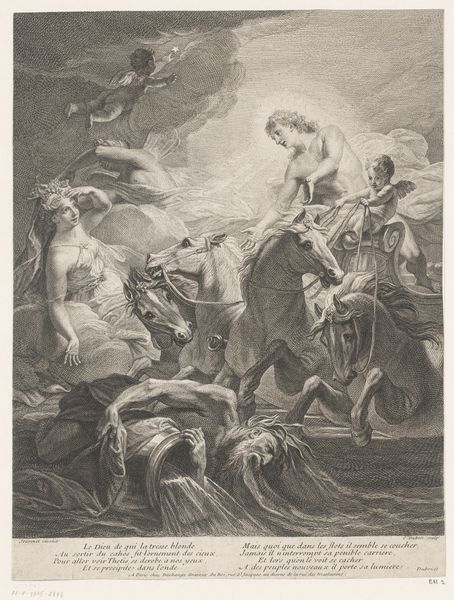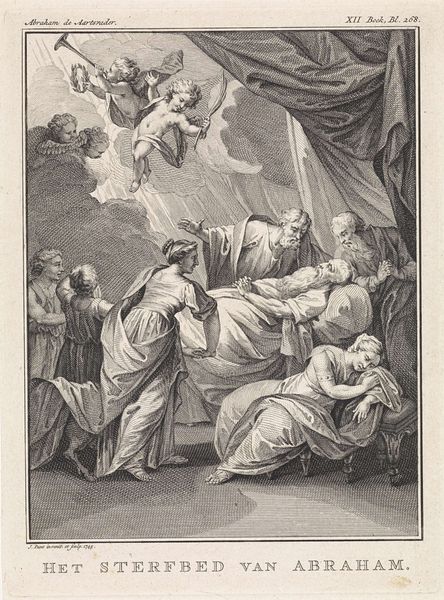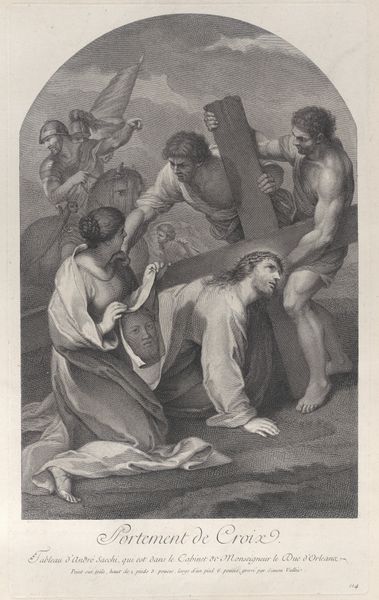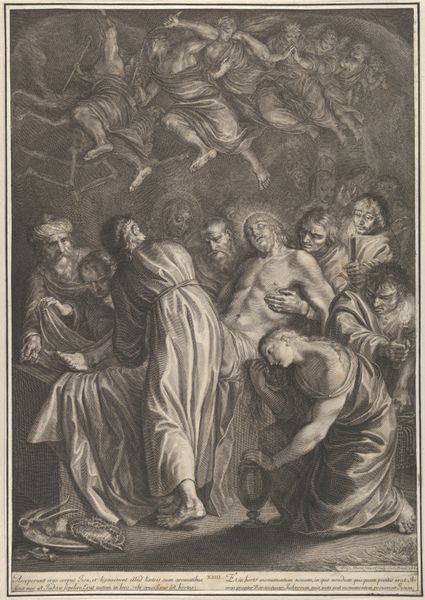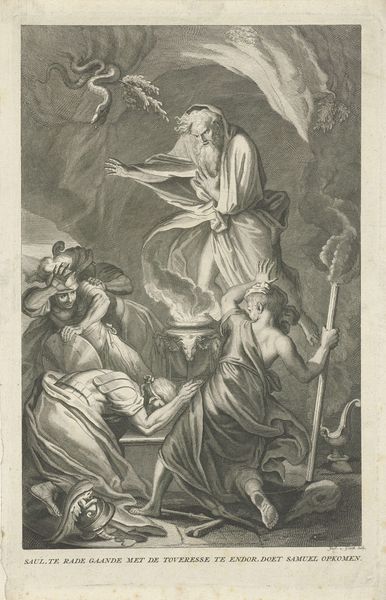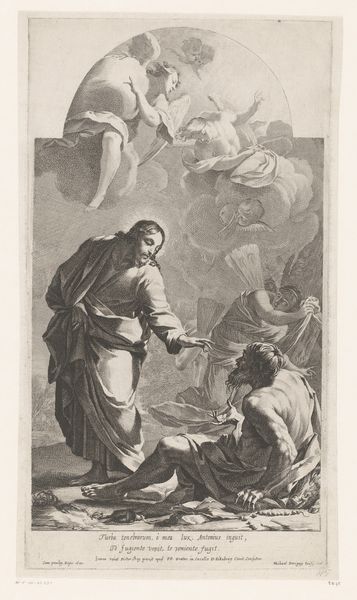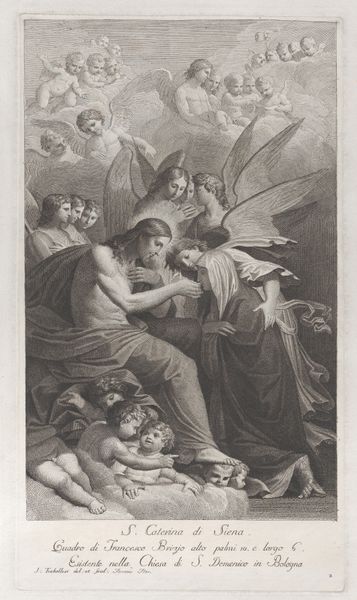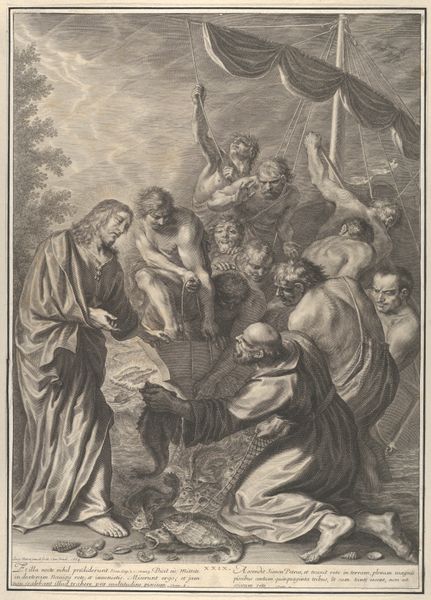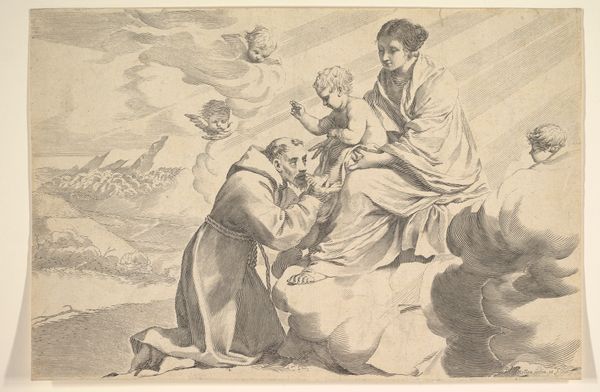
Clarence's Dream (Shakespeare, Richard III, Act 1, Scene 4) 1774
0:00
0:00
Dimensions: plate: 4 7/8 x 2 7/8 in. (12.4 x 7.3 cm) sheet: 6 7/16 x 3 5/8 in. (16.4 x 9.2 cm)
Copyright: Public Domain
Curator: Alright, let's talk about this remarkable engraving. We are looking at William Blake’s "Clarence's Dream (Shakespeare, Richard III, Act 1, Scene 4)," created in 1774. It depicts a scene from Shakespeare's Richard III, a powerful and dramatic moment of psychological torment and foreboding. Editor: It gives me the chills just looking at it! The composition alone…it’s all dark skies and tormented figures. Clarence seems trapped, with a heavy sense of unease radiating from him. Did Blake have to use such stark lines and high contrast in the scene? Curator: Well, Blake's visual interpretation is rooted in a fascinating socio-political perspective. We need to remember that interpretations of Shakespeare were tools to express opinions regarding power, justice, and morality. Think about Clarence’s position: imprisoned, vulnerable, and haunted by nightmares of betrayal, drowning, and the loss of control – all very pertinent themes considering power structures of that era. Editor: Totally, you know me, I see it that way too! The murky waters, those monstrous figures emerging from the depths...I get that this piece feels inherently, almost viscerally, about facing consequences, the sins you have kept hidden resurfacing with no mercy to confront you! The way he draws these demons of regret feels…cathartic? Curator: It does more than just illustrate a scene; it functions as a critique of power dynamics in 18th-century Britain and asks us to question, what does guilt truly look like when stripped bare by its inevitable return? What price must we pay for the actions we defend? This engraving can offer avenues for intersectional thought; it could encourage a deep dive into post-colonial, gendered and class anxieties of this historic setting. Editor: And those angels...they're not your typical fluffy cherubs, are they? More like avenging spirits, ready to deliver judgement. Seeing this today is wild: its dramatic flair somehow amplifies those complex themes you were just speaking about and invites each viewer to see themselves reflected in it. Blake makes us question whether we want to look deeper! Curator: Precisely! By connecting personal trauma and universal guilt within a powerful critique, the piece remains deeply resonant today, provoking difficult yet important conversations that allow it to transcend its Shakespearean origins. Editor: Right on. Art as a conversation starter… the very best kind!
Comments
No comments
Be the first to comment and join the conversation on the ultimate creative platform.
